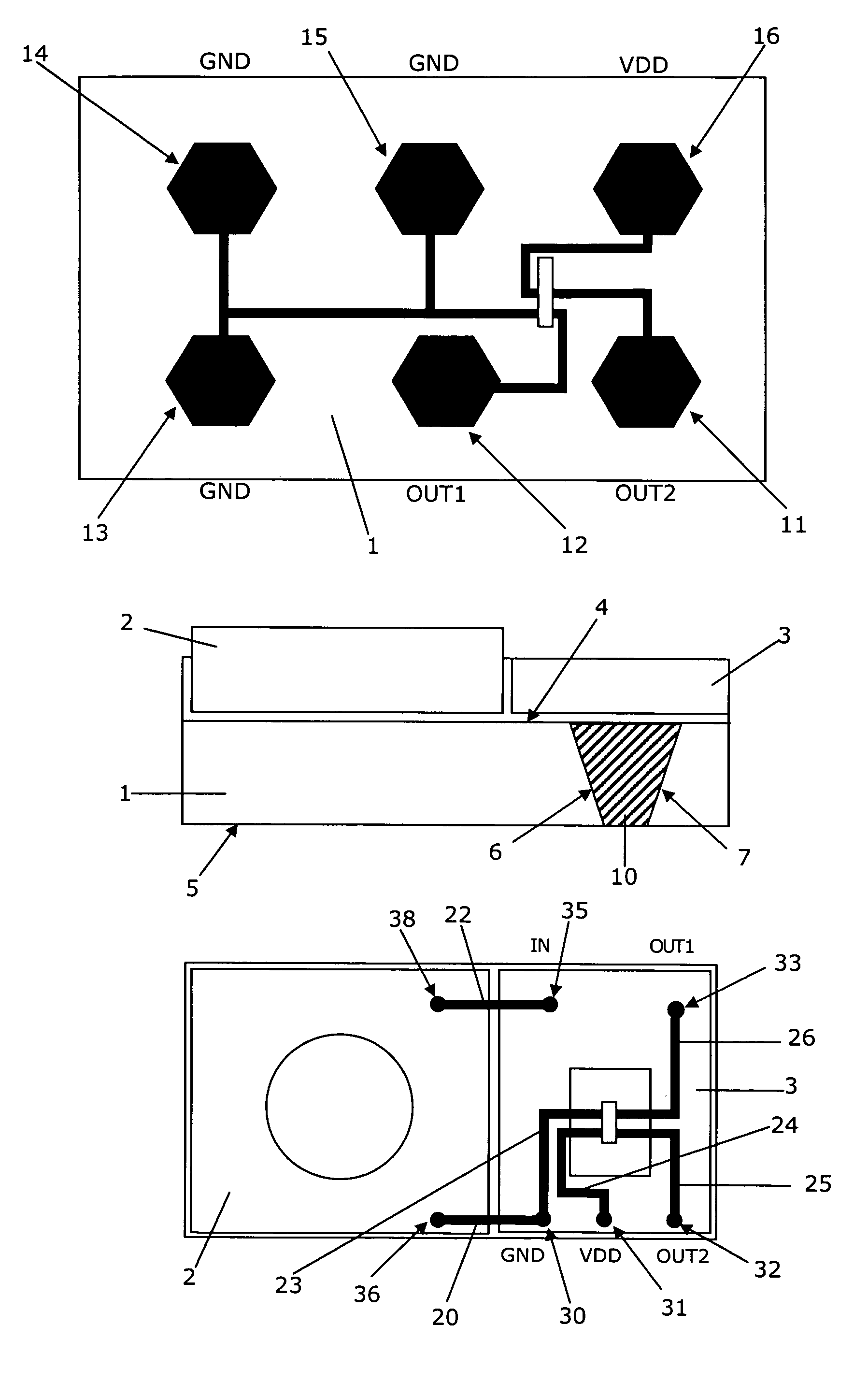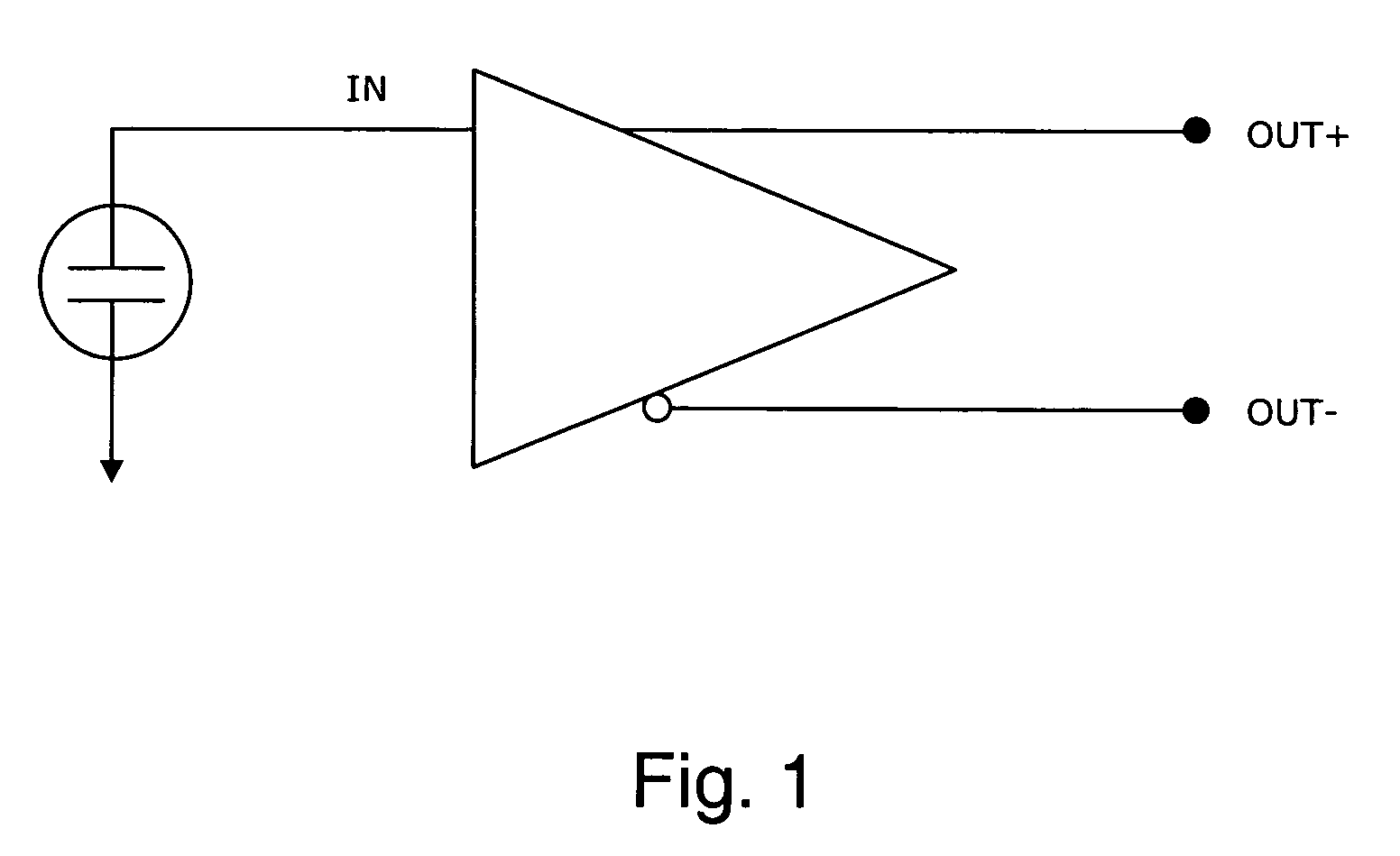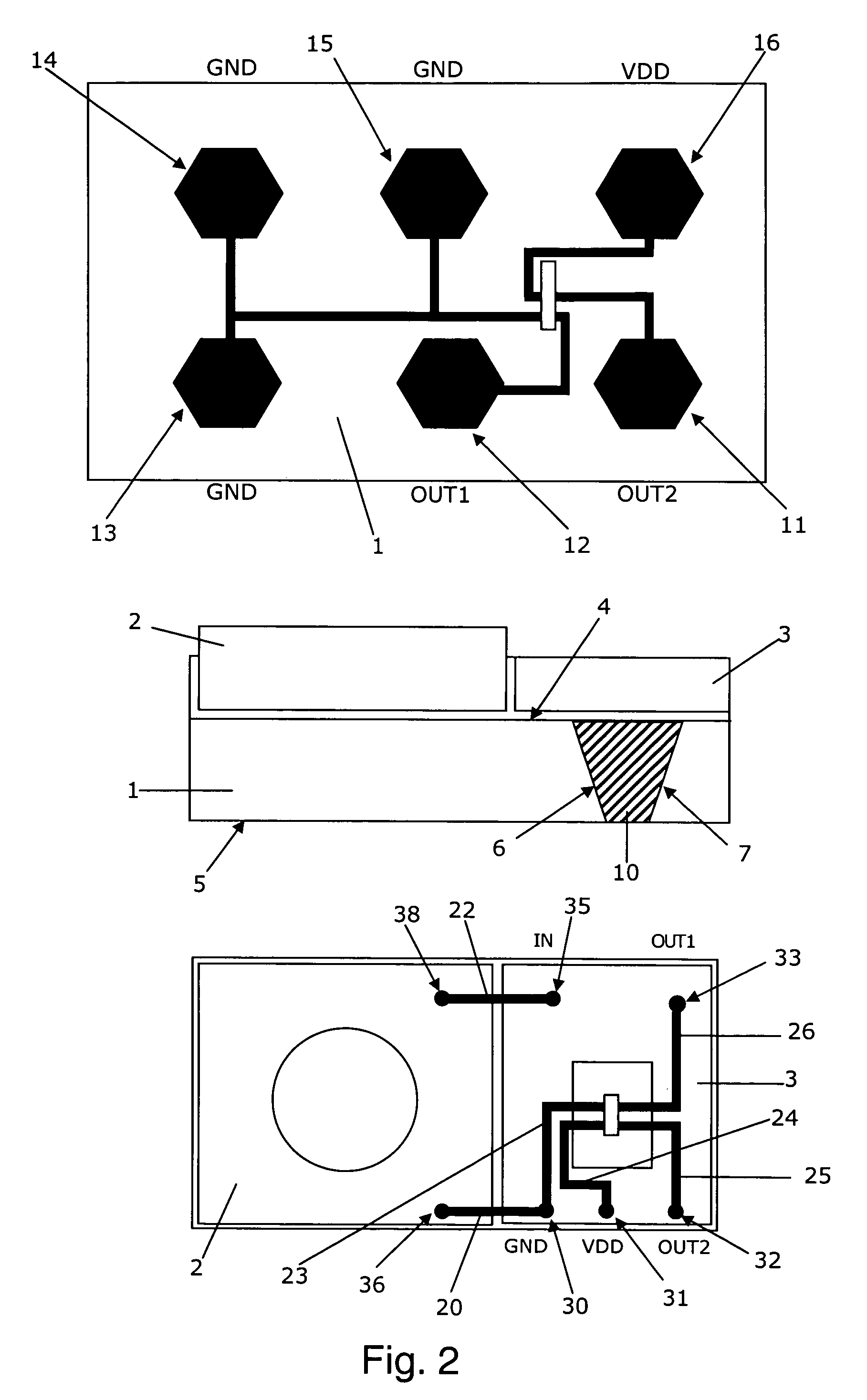Miniature microphone with balanced termination
a microphone and balanced technology, applied in the field of miniature microphones, can solve the problems of reducing power supply voltage, unable to solve the dynamic range problem, and the intention of providing a microphone assembly with a wide dynamic range, so as to improve the dynamic range, reduce the risk of emi, and reduce the effect of mass production
- Summary
- Abstract
- Description
- Claims
- Application Information
AI Technical Summary
Benefits of technology
Problems solved by technology
Method used
Image
Examples
Embodiment Construction
[0021]FIG. 1 shows an electric diagram illustrating the principle of interconnecting and terminating a miniature MEMS microphone according to the present invention. The microphone comprises a single-ended microphone transducer element and an amplifier providing a differential output on terminals OUT+ and OUT−. The single-ended transducer element may be a conventional electret condenser microphone or it may be a silicon-based condenser microphone. This means that the internal connections within the microphone assembly will not benefit from the balancing principle with respect to with reduced susceptibility to electromagnetic interference (EMI). However, the principle can be applied even with a traditional transducer element. Only the preamplifier needs to be adapted for providing a differential output.
[0022]Since the MEMS microphone can be produce with very small dimensions it is possible to minimise the distance between the transducer element and the amplifier thus the minimising th...
PUM
 Login to View More
Login to View More Abstract
Description
Claims
Application Information
 Login to View More
Login to View More - R&D
- Intellectual Property
- Life Sciences
- Materials
- Tech Scout
- Unparalleled Data Quality
- Higher Quality Content
- 60% Fewer Hallucinations
Browse by: Latest US Patents, China's latest patents, Technical Efficacy Thesaurus, Application Domain, Technology Topic, Popular Technical Reports.
© 2025 PatSnap. All rights reserved.Legal|Privacy policy|Modern Slavery Act Transparency Statement|Sitemap|About US| Contact US: help@patsnap.com



